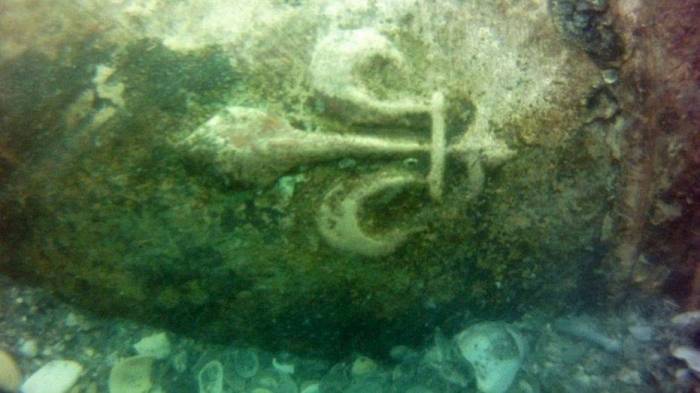That's because the artifacts may be from a small fleet of French ships, led by the explorer Jean Ribault, which sailed to establish a colony in Florida in 1562 and 1565. In a decision on the legal dispute released last week, U.S. judge Karla Spaulding gave ownership of the wreck and its valuable artifacts to the nation of France.
The Florida marine salvage company Global Marine Enterprises (GME) located the wreck's three ornate bronze cannons — each worth more than $1 million — and a distinctive marble monument (which is now considered "priceless") off Cape Canaveral in May and June of 2016.
In its evidence to the court, GME contended that Spanish raiders had looted the cannons and monument from the early French colony at Fort Caroline in Florida in 1565 — and so, they were on board a Spanish ship, probably bound for Cuba, when the ship went down off the Florida coast.
But the court ruled that they were probably being carried on Ribault's flagship, La Trinité, which sank during a storm off Florida in 1565 — and that any artifacts from the wreck still belong to France.
Sunken treasures
GME was operating under permits from the state of Florida to explore seven areas of the seafloor near Cape Canaveral when the company located the cannons and monument in May and June of 2016 wreck artifacts.
In addition to the three bronze cannons and the monument bearing the coat of arms of the king of France, GME's divers also found 19 iron cannons, 12 anchors and other objects buried beneath about 3 feet of sand, Robert Pritchett, GME's chief executive, told Live Science in August 2016.
Reasoning that the artifacts were being carried on a Spanish ship as plunder after the raid on the Fort Caroline colony, Pritchett had expressed hopes that GME would be allowed to salvage them.
But within a few months, the nation of France laid claim to the remains of the wreck in a U.S. court, alleging they came from Ribault's flagship La Trinité. [See Photos of the Colonial-Age Shipwrecks Found Off Cape Canaveral]
France, which was backed in its legal case by the state of Florida, claimed the wreck of La Trinité was protected by a sovereign right, recognized in U.S. law, that prevented the unauthorized salvage of naval ships — and the court has now accepted that argument.
Pritchett declined Live Science's request for a comment on the latest court decision. It is not known if GME will file an appeal against the court's ruling.
Colonial clashes
The court ruling has been welcomed by the St. Augustine Lighthouse & Maritime Museum, which runs a maritime archaeology program that has searched in the past, although unsuccessfully, for the wrecks from Ribault's "lost fleet."
The museum and its maritime archaeology program are partly funded by grants from the state of Florida, but they were not involved in this legal case.
"Under the Federal Sunken Military Craft Act, the court ruled that the country of France owned the wreck and any items located within it," the museum said in a statement. "Essentially, this ruling allows excavation of the wreck to be organized by the State of Florida, in cooperation with the French."
"This is St. Augustine's founding story, the clash between European powers on the First Coast," said the museum's executive director Kathy Fleming. "This shipwreck is the most significant found in Florida waters."
Scientists at the museum said they hope to be part of the project to preserve the wreck's treasures.
More about: #Florida
















































